
Vigor Shipyards is the current entity operating the former Todd Shipyards after its acquisition in 2011. Todd Shipyards was founded in 1916, which owned and operated shipyards on the West Coast of the United States, East Coast of the United States and the Gulf. Todd Shipyards were a major part of the Emergency Shipbuilding Program for World War II.
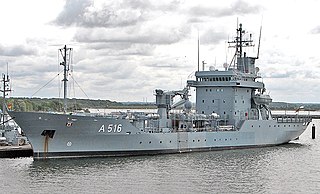
The Type 404 Elbe-class replenishment ships of the German Navy were built to support its squadrons of Fast Attack Craft, submarines and minesweeper/hunters, as such they are usually referred to as tenders.
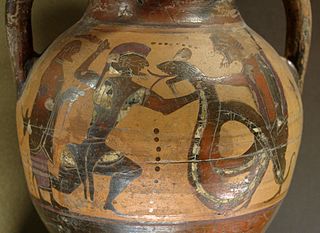
The dynastic history of Thebes in Greek mythology is crowded with a bewildering number of kings between the city's new foundation and the Trojan War. This suggests several competing traditions, which mythographers were forced to reconcile.

HMS Alliance(P417/S67) is a Royal Navy A-class, Amphion-class or Acheron-class submarine, laid down towards the end of the Second World War and completed in 1947. The submarine is the only surviving example of the class, having been a memorial and museum ship since 1981.

Inazuma was the twenty-fourth Fubuki-class destroyers, or the fourth of the Akatsuki class, built for the Imperial Japanese Navy in the inter-war period. When introduced into service, these ships were the most powerful destroyers in the world. They remained formidable weapons systems well into the Pacific War.
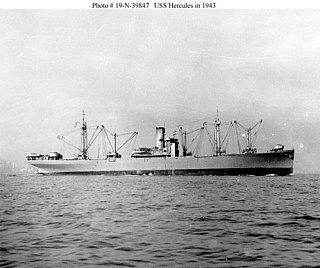
Type C3-class ships were the third type of cargo ship designed by the United States Maritime Commission (MARCOM) in the late 1930s. As it had done with the Type C1 ships and Type C2 ships, MARCOM circulated preliminary plans for comment. The design presented was not specific to any service or trade route, but was a general purpose ship that could be modified for specific uses. A total of 162 C3 ships were built from 1939 to 1946.

USS Bering Strait (AVP-34) was a United States Navy Barnegat-class small seaplane tender in commission from 1944 to 1946. She tended seaplanes during World War II in the Pacific in combat areas and earned three battle stars by war's end.
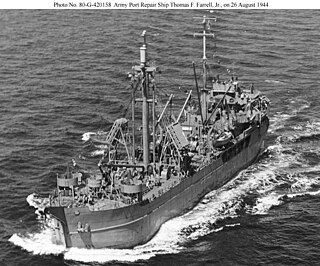
Vela (AK-89) was never commissioned and thus never bore the USS designation. The ship was transferred to the Army to become the Engineer Port Repair Ship Joe C. Specker shortly after launching. She was one of two such repair ships transferred to Navy in 1952 and served as the civilian crewed, unarmed USNS Vela (T-AK-89).
Tampa Shipbuilding Company, or TASCO, was one of a number of shipyards in Tampa, Florida. It operated from 1917 to after World War II, closing in 1947.

HMS Amphion was a second-class cruiser of the Leander class which served with the Royal Navy. She was built at Pembroke Dockyard, being laid down in 1881, launched in 1883 and completed in financial year 1885–86, and then lay in ordinary at Devonport. She was commissioned for the 1887 and 1888 annual manoeuvres. She was recommissioned in December 1888. served in the Pacific until 1890, in the Mediterranean from 1890 to 1895, in ordinary in Devonport from 1895 to 1897 and in the Pacific once more from 1897 to 1904, having a refit in 1900.

USS Amphion (AR-13) was the lead ship of her class of repair ship built for the United States Navy during World War II. The second U.S. Navy vessel to be named Amphion, she was not commissioned until January 1946, five months after the end of the war. She was decommissioned in September 1971 and transferred to the Imperial Iranian Navy as IIS Chahbahan. She was purchased outright by Iran in March 1977. After the 1979 Iranian Revolution she remained in service with the Islamic Republic of Iran Navy through at least 1985. Her fate beyond that date is not reported in secondary sources.

USS Cadmus (AR-14) was a Amphion-class repair ship of the United States Navy during World War II. Cadmus launched on 5 August 1945 by the Tampa Shipbuilding Company in Tampa, Florida, and sponsored by Mrs. B. P. Ward. Cadmus was commissioned 23 April 1946.

Willamette Iron Works was a general foundry and machine business established in 1865 in Portland, Oregon, originally specializing in the manufacture of steamboat boilers and engines. In 1904, the company changed its name to Willamette Iron and Steel Works, under which name it operated continually until its close in 1990.
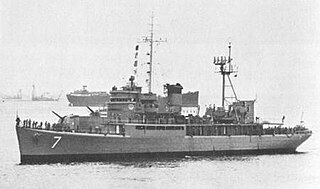
BRP Andrés Bonifacio (PF-7) was a Philippine Navy frigate in commission from 1976 to 1985. She was one of six ex-United States Navy Barnegat-class small seaplane tenders/ex-United States Coast Guard Casco-class high endurance cutters received from the United States after the Vietnam War, two of which were acquired to supply spare parts for the other four. Andrés Bonifacio was considered the lead ship of her class in the Philippine Navy, and she and her three commissioned sister ships were the largest Philippine Navy combat ships of their time.
The BRP Francisco Dagohoy (PF-10) was an Andrés Bonifacio-class frigate of the Philippine Navy that served from 1979 to 1985. She was one of six ex-United States Navy Barnegat-class small seaplane tenders and ex-United States Coast Guard Casco-class high endurance cutters received from the United States after the Vietnam War, two of which were cannibalized for spare parts without entering service. She and her other three sister ships were the largest Philippine Navy ships of their time.

USS Castle Rock (AVP-35) was a United States Navy Barnegat-class small seaplane tender in commission from 1944 to 1946 which saw service in the late months of World War II. After the war, she was in commission in the United States Coast Guard as the Coast Guard cutter USCGC Castle Rock (WAVP-383), later WHEC-383, from 1948 to 1971, seeing service in the Vietnam War during her Coast Guard career. Transferred to South Vietnam in 1971, she served in the Republic of Vietnam Navy as the frigate RVNS Trần Bình Trọng (HQ-05) and fought in the Battle of the Paracel Islands in 1974. When South Vietnam collapsed at the end of the Vietnam War in 1975, Trần Bình Trọng fled to the Philippines, where she served in the Philippine Navy from 1979 to 1985 as the frigate RPSFrancisco Dagohoy (PF-10).
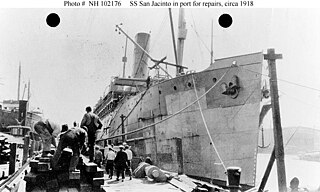
SS San Jacinto (ID-2586) was an American commercial passenger-cargo ship chartered by the United States Army for World War I service and considered for acquisition by the United States Navy as USS San Jacinto (ID-1531).

USS Yokes (APD-69), ex-DE-668, was a United States Navy high-speed transport in commission from 1944 to 1946.
A repair ship is a naval auxiliary ship designed to provide maintenance support to warships. Repair ships provide similar services to destroyer, submarine and seaplane tenders or depot ships, but may offer a broader range of repair capability including equipment and personnel for repair of more significant machinery failures or battle damage.

The Type B ship is a United States Maritime Administration (MARAD) designation for World War II barges. Barges are very low cost to build, operate and move. Barges were needed to move large bulky cargo. A tug boat, some classed as Type V ships, could move a barge, then depart and move on to the next task. That meant the barge did not have to be rushed to be unloaded or loaded. Toward the end of World War 2, some ships that had not been completed in time for the war were converted to barges. US Navy barges are given the prefix: YWN or YW. Due to shortage of steel during World War II, concrete ship constructors were given contracts to build concrete barges, with ferrocement and given the prefix YO, YOG, YOGN. Built in 1944 and 1945, some were named after elements.

















